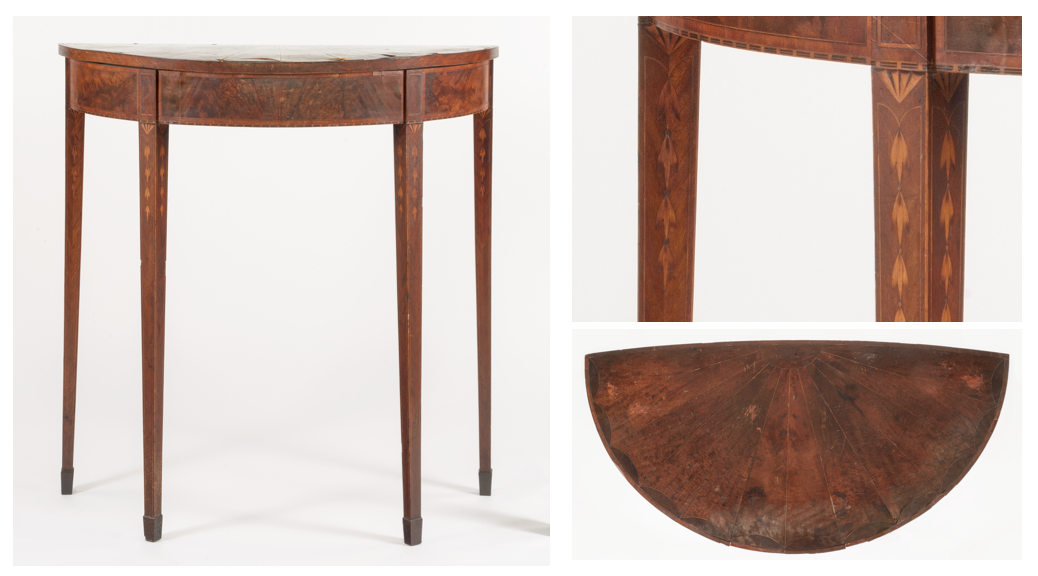A Furniture Mystery Continues
Material culture scholars like to say that objects “speak,” and sometimes in our studies at Winterthur we come across an object that just won’t stop talking. For our first year connoisseurship furniture block, I focused on a Baltimore pier table, brought out of storage for research and to receive conservation treatment. The table features a bellflower inlay and a fan-patterned veneer which covers the top. However, one especially unique feature initially drew me to this piece – the table’s slightly rounded back, which suggests that it was made for a round room.
 Courtesy, Winterthur Museum, Pier Table, 1790, Baltimore, MD, Mahogany, Mahogany veneer, Tulip poplar, Bequest of Henry Francis du Pont, 1957.1028
Courtesy, Winterthur Museum, Pier Table, 1790, Baltimore, MD, Mahogany, Mahogany veneer, Tulip poplar, Bequest of Henry Francis du Pont, 1957.1028
Round rooms were especially popular during the federal period, about 1789 to 1820. Stylish homes embraced the neoclassical style, which celebrated the contrasting geometry of straight lines balanced with ellipses and arches. Renowned British architect Robert Adams frequently employed round rooms in his designs, and wealthy Americans adapted the style to create homes that evoked British country estates.
One house in Baltimore during this period is definitively known to have had an oval room: Willow Brook. An elegant country home in the neoclassical style, Willow Brook is unfortunately no longer standing, though its oval drawing room survives in an installation at the Baltimore Museum of Art. Plasterwork in this round room features a bellflower motif. Though the bellflower was very common in Baltimore decorative arts during this period, this does suggest that the pier table would not have been out of place in Willow Brook, and that Willow Brook is representative of the type of high-style home where this pier table originally lived.

Floor plan showing the first floor of the original Willow Brook home, featuring the oval drawing room at the center. Image from William Voss Elder, III. The Oval Room from Willow Brook. Baltimore: The Baltimore Museum of Art, 1966.
Of course, the pier table absolutely could have travelled beyond Baltimore, its place of construction. During the federal period, Baltimore was a hotbed of furniture construction, with cabinetmakers exporting their work throughout the Mid-Atlantic region. So the search continues for the original home of Winterthur’s unique pier table. The more we can learn about this significant piece, the deeper our understanding of the interior spaces of the federal period will be.
Certainly, this pier table speaks: it tells of its owner’s dedication to neoclassical design, of federal-period Baltimore’s booming furniture industry, and of the developing identity of the city’s new upper class. But it hasn’t answered my biggest curiosity: the domestic context of where exactly this statement piece was used. Well, not yet, anyway.
By: Candice Candeto, WPAMC Class of 2018

Leave a Reply